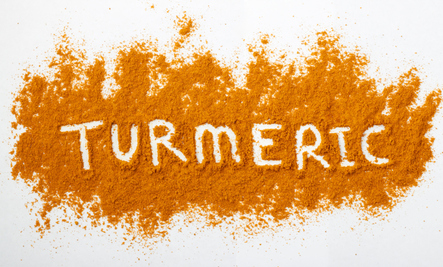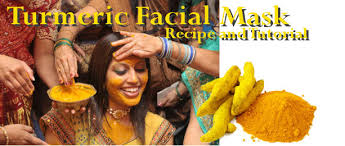
As a Skincare Therapist, one of my favorite things to do is research Beauty practices and secrets from other countries and cultures.
A favorite DIY of mine usually involves using a native indian spice Tumeric.
Turmeric is from a perennial shrub originating in south and southeastern Asia and western India. In India, it was first used as a dye and then as a spice. It has been used in Indian ayurvedic and Chinese medicine for years for the treatment of inflammatory and digestive disorders.
There is a long list of skin care benefits associated with turmeric, including the treatment of acne blemishes, blackheads, dark spots and hyperpigmentation and other skin conditions like eczema and psoriasis. It helps heal and prevent dry skin, and to slow the skin aging process, and is used to diminish wrinkles, keep skin supple and improve skin’s elasticity. This sunny bright spice is also being used as an ingredient in sunscreens. It is used daily by East Indian women as a facial cleanser and exfoliant.
Regular turmeric can temporarily stain the skin. Kasturi turmeric (curcuma aromatica) is non-staining and has the same properties for clearing acne, inhibiting facial hair growth and brightening the complexion. It is not edible and therefore not used for cooking and should only be used externally. It may be difficult to find in some areas of the US. You can look for kasturi turmeric in Indian stores. Gram flour (also known as besan flour, chickpea flour and garbanzo flour) is often used in homemade recipes with turmeric, to cleanse and exfoliate the face. Milk contains lactic acid which helps improve skin’s texture by sloughing off dead skin cells, replenishing moisture and rejuvenating the complexion. If you are allergic to wheat flour you can substitute with rice flour.
Tumeric Recipes
For a wrinkle reducer and skin brightener: A mixture of milk and turmeric is good for fine lines and wrinkles. Mix turmeric powder and rice powder with raw milk and tomato juice, enough to form a paste, and apply to face and neck for 30 minutes. Rinse with lukewarm water.
Facial cleanser for a glowing complexion: Mix a pinch of kasturi turmeric with milk. Turmeric (a natural antiseptic) with milk is also good for poison ivy, eczema and psoriasis.
Face cleanser to exfoliate and brighten skin: Mix chickpea (or rice) flour with turmeric powder in equal proportions. To save time for future treatments, store the mixture in airtight bottle. Add raw or soy milk (or yogurt) to a teaspoon of chickpea/turmeric powder to make a paste. Apply evenly to the face and leave on for about 10-15 minutes. Wash the mask off with warm water.
Facial hair reducer: Mix kasturi turmeric with chickpea flour (which is also used so that your face does not get stained.) You can also mix the turmeric with a favorite facial scrub. Leave on for 10-15 minutes. If used regularly, you should see results in about a month.
Night cream: Prepare a paste made from turmeric and milk or yogurt and apply it to your face. Allow the mask to dry and leave it on overnight. For a less messy nighttime regimen, you can add a pinch of turmeric to your favorite moisturizer or treatment product. (In both cases, be sure to use an old pillowcase and bed linen that you don’t mind staining.) Wash off the mask in the morning using a gentle cleanser.
Acne treatment: Turmeric is used for acne because of its antiseptic and antibacterial properties that fight pimples and breakouts. It removes redness from acne and other types of scarring, reduces inflammation and evens out skin discolorations. Some people drink the spice as a tea with water or milk to help prevent acne outbreaks. If turmeric tea doesn’t sound very palatable to you, try mixing turmeric with plain water or coconut or sesame oil, and dab onto blemishes and acne scars. You can also mix a small about of turmeric with lemon or cucumber juice (just a few drops to make a paste) and leave on the marks for 10-15 minutes.
Oily Skin Mask: Turmeric is good for oily skin because it helps regulate the production of sebum, an oily substance produced by the sebaceous glands. The orange juice provides fruit acid to clear blemishes and sandalwood is a natural astringent. Add about 1-½ tablespoons of sandalwood powder and a pinch of ground turmeric to 3 tablespoons of orange juice and apply the paste to the face. Leave on for about 10-15 minutes. Rinse with lukewarm water.
**Article Courtesy of http://multiculturalbeauty.about.com/od/Skincare/a/Turmeric-For-Beauty.htm ***
Tumeric can be purchased in Nigeria as well!



Please, what is the yoruba name for Tumeric?
Ata ile pupa
where to get turmeric in lagos
In spice aisle in supermarkets. E.g shoprite or oasis
I leave in delta state, Nigeria. Please can I found turmeric and gram flour to buy here
I’m not sure, but I’ll ask
You can buy from konga. That’s where I usually get mine. They are measured in 100grams
If you are in Abuja contact me for your turmeric powder and turmeric soap with oter natural soaps. Thanks
@ faith pearl Gaffa..what’s your abuja contact info? Need tumeric soap
Here is my contact 08176774368 07034871129